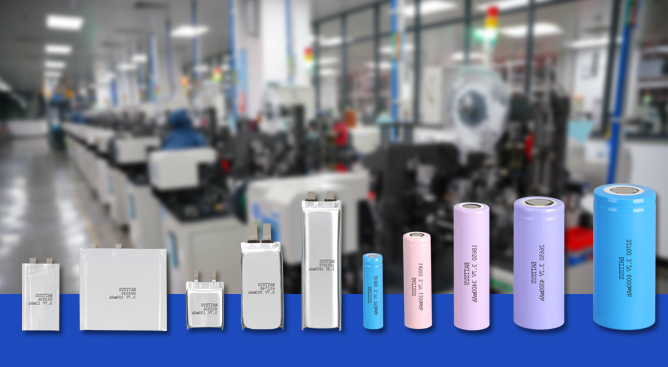Analysis of the reasons for the short lifespan of high rate polymer battery cells.
High rate represents the charging and discharging ability of lithium batteries relative to ordinary rate batteries. The rate is divided into discharge rate and charge rate, and "C" is used to represent the ratio of battery charging and discharging current, that is, the rate. So high rate batteries are a type of battery with a large discharge current, and they are also quite common in daily life applications. High rate batteries are used in aerial drones, agricultural crop protection drones, emergency start-up power supplies, model aircraft, power tools, and other applications.
But many attentive friends may also find a problem, which is that their high rate batteries have a relatively short lifespan. Why is the lifespan of high rate polymer battery cells short? We need to return to the high current discharge characteristics of high rate batteries for this issue.

The impact of high current discharge on batteries is as follows:
1. High current causes a rapid increase in battery temperature, and overheating may damage the internal structure of the battery. For example, if the price of a lithium battery is high, melting the internal separator can cause a short circuit, and in extreme cases, it can cause combustion or explosion;
2. High current can cause a significant decrease in the open circuit voltage of the battery, as the battery has a certain internal resistance. If the voltage is too low, it can cause the load to malfunction, such as automatic shutdown;
3. Frequent or prolonged high current can also cause irreversible reactions of chemical substances inside the battery, resulting in permanent loss of battery capacity, gas generation, and battery swelling.
The reason for the short lifespan of high rate polymer battery cells
This impact is generally compared to ordinary batteries, and high rate batteries are still relatively advanced in this regard. Moreover, the high current discharge of many high rate batteries belongs to the category of instantaneous discharge, rather than continuous high current discharge. But there is still a certain impact. There are two reasons for this.
1. Affects the positive and negative poles
Because the high rate polymer battery cells perform high rate cycling, this can cause the reaction of lithium ions to be particularly fast during high rate charging and discharging. Specifically, the time for lithium ions to travel from the positive electrode to the negative electrode or from the negative electrode to the positive electrode becomes shorter, which consumes a relatively large amount of positive and negative electrode materials and electrolyte. Therefore, it is reasonable to reduce the battery life.
2. Affects the diaphragm
The impact on the positive and negative electrodes and electrolyte is one aspect, and the impact on the battery separator is another aspect. This is actually an indirect result of affecting the positive and negative electrodes and electrolyte. Lithium ion battery brands need to constantly pass through the diaphragm holes quickly during high-speed movement. For example, a diaphragm has a lifespan of 10 years at normal lithium-ion battery brand speeds, which may decrease to 5 years at high speeds.
The above is the analysis of the reasons why high rate
polymer battery cells have a short lifespan brought to you by the lithium battery price manufacturer Youchuangweiye.
